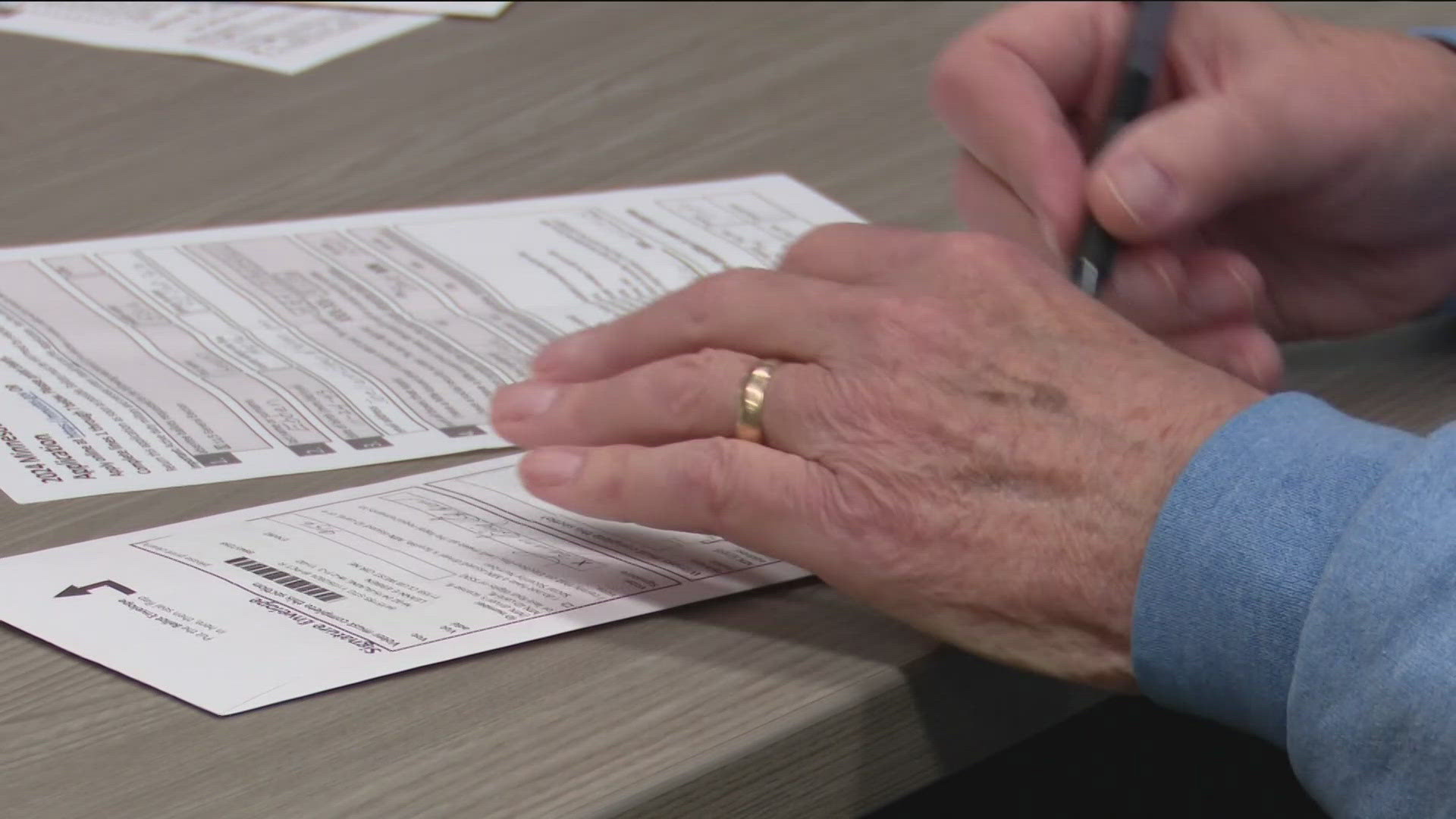MINNEAPOLIS — Hundreds of thousands of voters have already decided to vote absentee this year, but those ballots won't be opened until Election Day. That's one of the reasons elections officials are working to assure us those ballots will be protected until then.
“We always have, but we’ve increased those security measures throughout,” Blaine City Clerk Cathy Sorensen told KARE.
“Here at City Hall the ballots are stored in a room that only election officials have the key to. We have re-keyed that lock to make sure it’s not a master key that anyone can get in there.”
During the pandemic, people got used to the idea of throwing their ballot in the mail or handing it to somebody at a curbside drop-off site. This new way of doing things caught on with a large segment of voters.
As of Oct. 17, more than 337,000 absentee ballots have already been accepted statewide. That many more have been sent to voters but haven't been returned and accepted yet.
"During the COVID election in 2020 people got used to it, they got a taste for it and they trust it," Minnesota Secretary of State Steve Simon told KARE.
"So, that accounts for the surge and the increase."
And yet, not everyone is convinced the mail-in system is foolproof. In the KARE 11 MPR News Star Tribune Minnesota Poll taken in late September, only half of respondents said they think those absentee ballots are protected from fraud.
About 38% said they believe mail-in ballots are vulnerable to fraud and 12 % said they weren't sure about it.
That's why we're seeing efforts to by elections managers to show how the system works ahead of Nov. 5.
"With absentee ballots, there’s a couple of steps that are involved," Simon said. "You have to see if the person did it right. Did they sign it? Did they have a witness sign it? Did they do it right? Then, and only then, can you count them."
The job of reviewing incoming absentee ballots is done across the state by bipartisan absentee ballot boards. We saw one such board - Mark Olson and Terry Wold - on Thursday afternoon going through ballot envelopes and paperwork at Blaine City Hall.
They were checking to see if the outer ballot envelopes matched with the voter's application for the absentee ballot.
"The judges are looking at the signature envelope, which is just like signing the roster on Election Day, because when they're voting early it is Election Day to them," Sorensen said.
The ID information used by the voter on the signature envelope - the driver's license number or last four digits of the Social Security number - must match the information on the application form. Same goes for the voter's signature. The one on the envelope must match the one on the application.
The bipartisan ballot board is dealing with paperwork and ballots that are still inside an envelope that's inside yet another envelope, so they can't see how the person voted as they're deciding whether to accept it.
The absentee ballot will be rejected if those key factors don't match. They can also be rejected if there's no witness signature, or if the witness isn't a registered Minnesota voter. In those situations, the elections offices contact the absentee voter to offer them a chance at a do-over.
If the ballot is accepted, the unique bar code on the signature envelope is scanned into the State Voter Registration System to create a record that the person voted absentee. It enables absentee voters to track the status of their ballots on the Secretary of State's online ballot tracking site.
It also ensures that someone can't vote again in person on Election Day and that a person can't cast multiple absentee ballots. Voters may receive multiple absentee ballot applications from multiple sources, but ultimately, they're only allowed to cast one ballot tied to their unique voter information.
As the election nears the ballots are removed from their signature envelopes but won't be counted until Election Day.
"After our ballots are sent to Anoka County, they’re opened up, and the signature envelope is put aside. Inside is a ballot envelope - their actual ballot is inside an orange-colored envelope - and that’s put aside. So, now we know this particular voter voted, but we don’t know how they voted."
In the past, the influx of those absentee totals has created speculation that "new" ballots were being added after the counting had ended. That's not the case.
"If there are late arriving batches of absentee ballots those are going to take longer. That’s just sort of common sense," Simon said. "And that means they might be added later."
In the meantime, those ballots will be secured. In Blaine you need a badge key card just to get to the floor where the election equipment is kept.
"Even getting into the actual election cage there's an old school padlock that only election officials have," Sorensen said.
"Again, it's just one more layer to make sure we have that chain of custody and that confidence no one was able to access without one of us."

